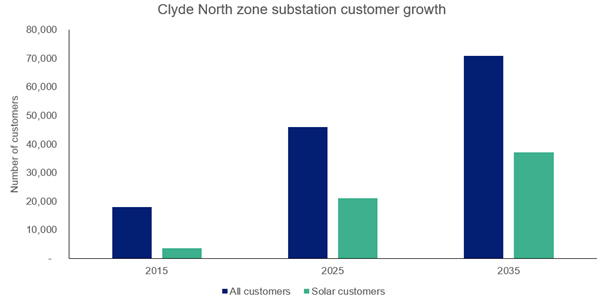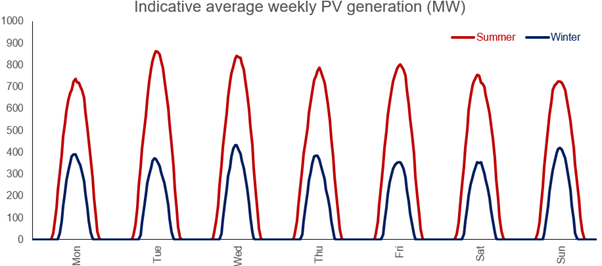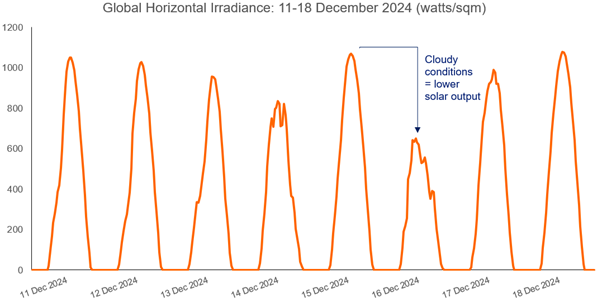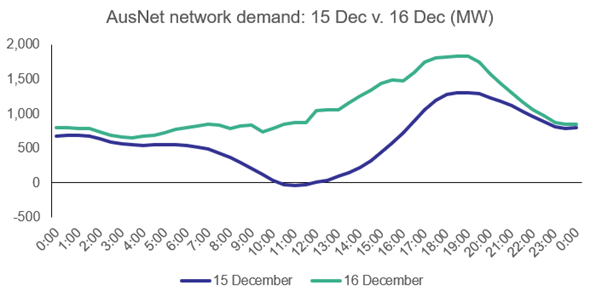In Victoria, investment in consumer energy resources (CER) - and in particular rooftop solar - continues to grow. Approximately 29% of households in our electricity distribution network have rooftop photovoltaic (PV) systems. We expect that our customers will continue to invest strongly in CER, with our recent projections estimating that solar penetration will reach 39% of households – more than 300,000 customers – across our distribution network by 2031.
Our customer base has consistently grown in line with population growth, largely concentrated in the growth corridors in the south-east and north of Melbourne. With a large proportion of this population growth settling into new homes with rooftop PV, we expect higher solar penetration in these areas over the next ten years. For example, customers connecting to our growing Clyde North zone substation in Melbourne’s southeast, already have approximately 38% solar penetration, and this is forecast to reach around 52% by 2035.

This continuing growth of both customers and rooftop PV presents both opportunities and challenges for our network.
Forecasting solar output
In our electricity distribution network, peak demand for electricity usually occurs in the early evening as people return home from work and school and begin cooking, heating and cooling their homes. While output from rooftop PV is typically lower at these peak times, the strong uptake of rooftop PV means that it still plays an important role in reducing demand from the grid. This is particularly true in summer, where the sun remains higher during peak demand periods. As shown below, megawatt (MW) output across our network from our rooftop PV customers is significantly higher in summer than winter.

When we forecast what the demand on our network is going to be, we cannot predict how much sunshine we’ll get on a summer’s day. But using data like the above, our forecasts can embed assumptions about the likely contribution that rooftop solar will make to our customers’ power needs.
An unusually hot summer
The summer of 2024-25 was an unusually hot summer for Victoria. According to the Bureau of Meteorology, it was the fourth warmest summer on record since 1910, with average maximum temperatures 2 °C above the 1961–1990 average.

Given these high temperatures, it was not a surprise to see record demand on some parts of our network. But it wasn’t just the high temperatures contributing to the increase in demand.
Many of this summer’s hottest days also had unusually significant cloud cover, reducing solar output from rooftop PVs. For example, while 16 December 2024 reached around 35 degrees, it was also very cloudy, reducing the day’s solar irradiance significantly when compared to average peaks and having a consequential impact on the amount of rooftop PV generated per kW of capacity. See below for details.

The combination of high temperatures, low solar output and increased demand for cooling, resulted in the grid supplying much more energy than even our ‘1-in-10 year’ forecasts predicted. To avoid shutting down parts of the grid and to avoid network instability, we deployed additional embedded generation in localised areas. The impact of the stark differences in solar irradiance over a 48-hour period in December, can be clearly seen in the demand on the grid:

While similar unexpected conditions have a real and immediate effect on our network, they are also a valuable tool to help us better understand the interplay between supply, demand and consumer energy resources into the future. They reiterate the important role rooftop PV now plays in our network, as well as highlighting the challenges we must navigate as proliferation and penetration of solar increases. Better understanding both these opportunities and constraints helps us undertake more complete network and contingency planning going forward.
Seasons like the 2024/25 summer also highlight the role that home and community batteries might play in managing grid demand on challenging days. For example, energy stored in home batteries during the day could be discharged in the evening, reducing the need to pay peak period charges and lowering energy bills. Similarly, orchestrated home and community batteries could help balance and manage network demand throughout the day, reducing the peak and avoiding the use of costly embedded generation. Together, an increase in both home and community batteries can help us to navigate these network intermittency challenges as we transition towards a more renewable - and solar - future in Victoria.
